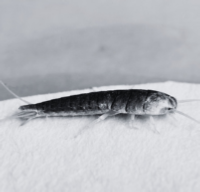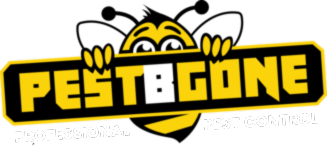Pestbgone Limited
The Mews, Hounds Road,
Chipping Sodbury, Bristol GL8 8UL
Buckinghamshire -
Office: 01628 473062
Onsite: 07728 314363
South Gloucestershire -
Office: 07585 124939
Onsite: 07585 124939
Our Services
Registered in England and Wales.
Company No: 13370531
VAT No: 364671477
Registered Address: The Mews, Hounds Road, Chipping Sodbury, Bristol, South Gloucestershire GL8 8UL
All Rights Reserved © 2025 Pestbgone Ltd






Our Services
Silverfish
Silverfish and firebrats are slender, wingless insects, up to 20mm long with three, long bristletails at the end of their body. Silverfish are shiny and silver or pearl grey. Firebrats are mottled grey or tan. Both are extremely fast runners and are often seen only when trapped in wash basins or bath tubs, where they are unable to climb the smooth vertical surface to escape. They hide during the day and feed at night.
The easiest way to tell one insect from another is by the length of the antennae -
Silverfish and firebrats are generally harmless, but can cause damage by feeding on paper, books, wallpaper, or by infesting packets of dried food, particularly in damp locations. They will eat any of the foods humans eat and also starch, glue, paste and dead animals, even to the extent of cannibalising dead or injured members of their own species.
These insects and their eggs are often brought into the home in cardboard cartons, books, papers, fabrics and other carbohydrate materials.
Both insects can be found anywhere in the house -
Adult insects have quite a long lifespan – 1 to 3 years. Eggs are laid in cracks and crevices in damp and warm locations and hatch in 2 – 8 weeks.
Prevention and Cure
Clean up areas where wood, cardboard boxes, old papers or books are stored. Look for any moist decomposing vegetable matter in or near to the house (compost heaps, grass cuttings, mossy roofs, or pot plants, damp areas under floor tiles, damp wood under sinks and baths). Clearing away any decaying matter and remedying any dampness faults will usually prevent re-
Treatment
1/ Our service is to attend and carry out a thorough inspection of your home for Beetle infestation and to treat affected rooms if it is safe to do so. Please note that this may not result in eradication of the insects
2/ This is a single visit treatment and the products used remain active for many weeks. If the infestation is severe or if our technician so determines, we may supplement this by applying an insecticidal spray, in which case you may need to vacate the property until this dries, which is normally around 2 hours. Our technician will advise you if this is necessary.
3/ We are only permitted to apply insecticides if the pest is confirmed as present, and in rare cases where there are no obvious signs we may instead need lay monitor traps and return to check these to confirm if an infestation is present. The fee for this work is the same as for treatment.
4/ These pests can be hard to eradicate as often their main harbourage is within cavity walls and hard to treat areas so re infestation can often occur.
WikiPest
Everything you need to know about
Silverfish

We’re here to help -
Buckinghamshire & South East
South Gloucestershire & South West
